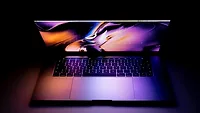Fluorescent Fingerprint Forensics Aims to Increase IDs from Hidden Prints
Color-changing fluorescent films could lead to higher confidence identifications from latent (hidden) fingerprints on knives, guns, bullet casings and other meal surfaces, according to a Science Codex article.
The greatest source of fingerprint forensic evidence comes from latent fingerprints (those not immediately visible to the eye) because they are less likely to be ‘wiped,’ the article says. However, getting a clear visual of these prints for positive identification is difficult. Despite the availability of several enhancement techniques, only 10 percent of fingerprints taken from crime scenes are sufficient to be used in court.
The classical approach (colored powder brushed on) requires significant preservation of fingerprint material, and it is vulnerable to ageing, environmental exposure of attempted washing of fingerprint residue.
To address this, a team of researchers from the University of Leicester, the Institut Laue-Langevin and the STFC’s ISIS pulsed neutron and muon source, created a new technique that visualizes fingerprints by exploiting their electrically insulating characteristics – essentially, the print works as a stencil, blocking an electric current used to deposit a colored electro-active film, which creates a negative image of the print.
You can read more about the scientific technique here.
Looking for a reprint of this article?
From high-res PDFs to custom plaques, order your copy today!






